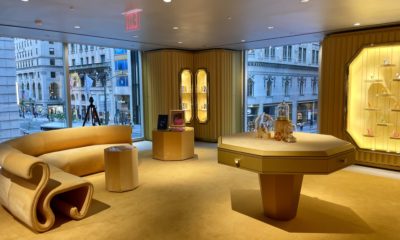You might recall the ad. A woman is sitting alone in her cabin in the woods, unaware that a chainsaw-toting murderer is outside.
When he breaks in, she flees – and runs so fast and so far that he gives up the chase.
She's safe, and only because she's in shape and wearing Nike shoes.
Creatively, the premise was well-done. But socio-culturally, it was a bomb!
“Not only did it open us up to issues of violence against women,” says John Hoke III, Nike's global director of footwear design, “but it was also such an objectionable, male look at female athletics. It seemed to be saying, 'Only if you can outrun us can you survive.'”
Advertisement
Sometimes, it's on such marketing blunders that innovation is born.
Most retailers keep the woman shopper in their sights. But Nike had lived for 30 years in a man's world. Its testosterone-loaded marketing thrust was that if you wear Nike, you'll play quarterback and be a finalist in the Take-the-Homecoming-Queen-to-the-Dance sweepstakes.
Then, in 1999, came the ad. At about the same time came Venus and Serena, Marion Jones, the U.S. women's World Cup soccer champs.
“We realized that we had been missing an enormous market,” says Hoke. “I don't mean simply not aiming product or advertising at it. I mean, not understanding it. Women make up 51 percent of the population. We'd been shooting ourselves in the foot.”
So what did Nike do? Develop a new product line? Marketing campaign? Retail prototype? Yes.
But it also dug deep within itself, to examine and change its cultural personality. It tried to get inside the mind and heart of its female consumer.
Advertisement
That's Nike: marketing from the inside out.
Research showed that for women, sports gear isn't a fashion thing. Wearing Nike would not generate an invitation to the dance.
Nor is it about hero worship. “Air Hamm” doesn't resonate.
Nor performance. Women know Nike shoes won't make them serve like Serena Williams.
Rather, Nike learned, it's about fitness.
But Nike wasn't satisfied just to understand the female consumer. It dug down even deeper, to explore the larger issues of femininity.
Advertisement
According to an article in Fast Company, it brought in a biologist to conduct a workshop on biomimicry: having designers relate to animals or insects they thought were emblematic of femininity.
“Mother Nature is the purest designer,” notes Hoke.
So what's “feminine”? First came the usual suspects: swan, butterfly, deer.
The answer that changed the mindset, though, was the lioness: beautiful and graceful, but also predatory and ferocious.
One Nike designer told Fast Company, “Biomimicry taught me you can design a shoe that looks both feminine and tough.”
Biomimicry. Exercises that force you to think outside your gender. It sounds like the premise of a movie. Wait a minute! It was the premise of a movie. “What Women Want,” starring Helen Hunt and Mel Gibson. Alpha male marketing executives trying to think like women on the client's behalf. And the client was – Nike.
Nike turned an internal marketing effort into a Mel Gibson movie. Who's the smartest company on the planet? It must be the shoes.

 Headlines2 weeks ago
Headlines2 weeks ago
 Headlines2 weeks ago
Headlines2 weeks ago
 Eric Feigenbaum6 days ago
Eric Feigenbaum6 days ago
 Headlines1 week ago
Headlines1 week ago
 Headlines4 days ago
Headlines4 days ago
 Headlines1 week ago
Headlines1 week ago
 Headlines6 days ago
Headlines6 days ago














